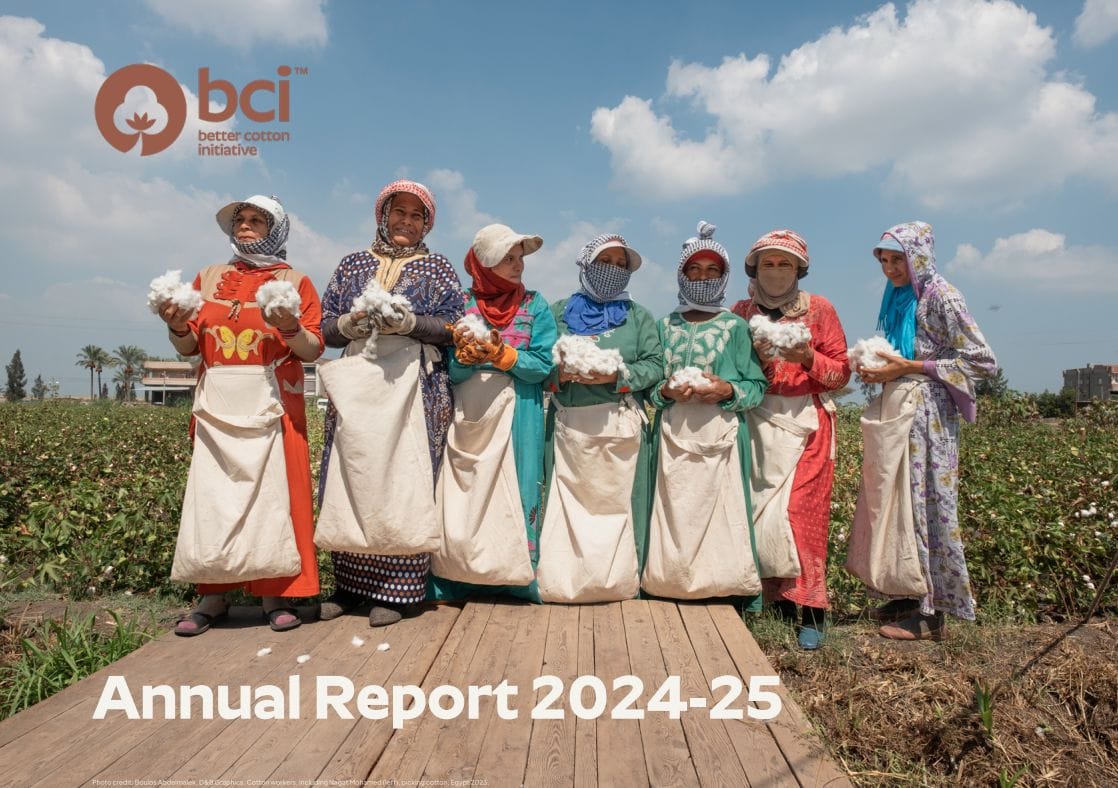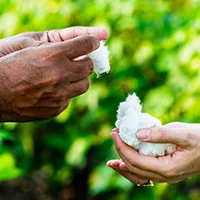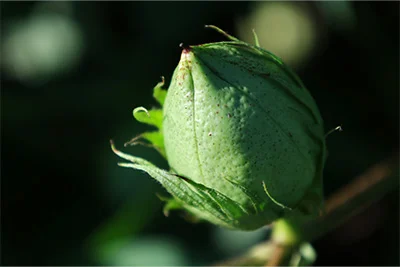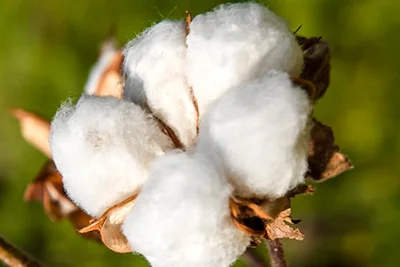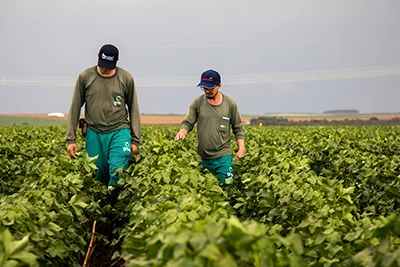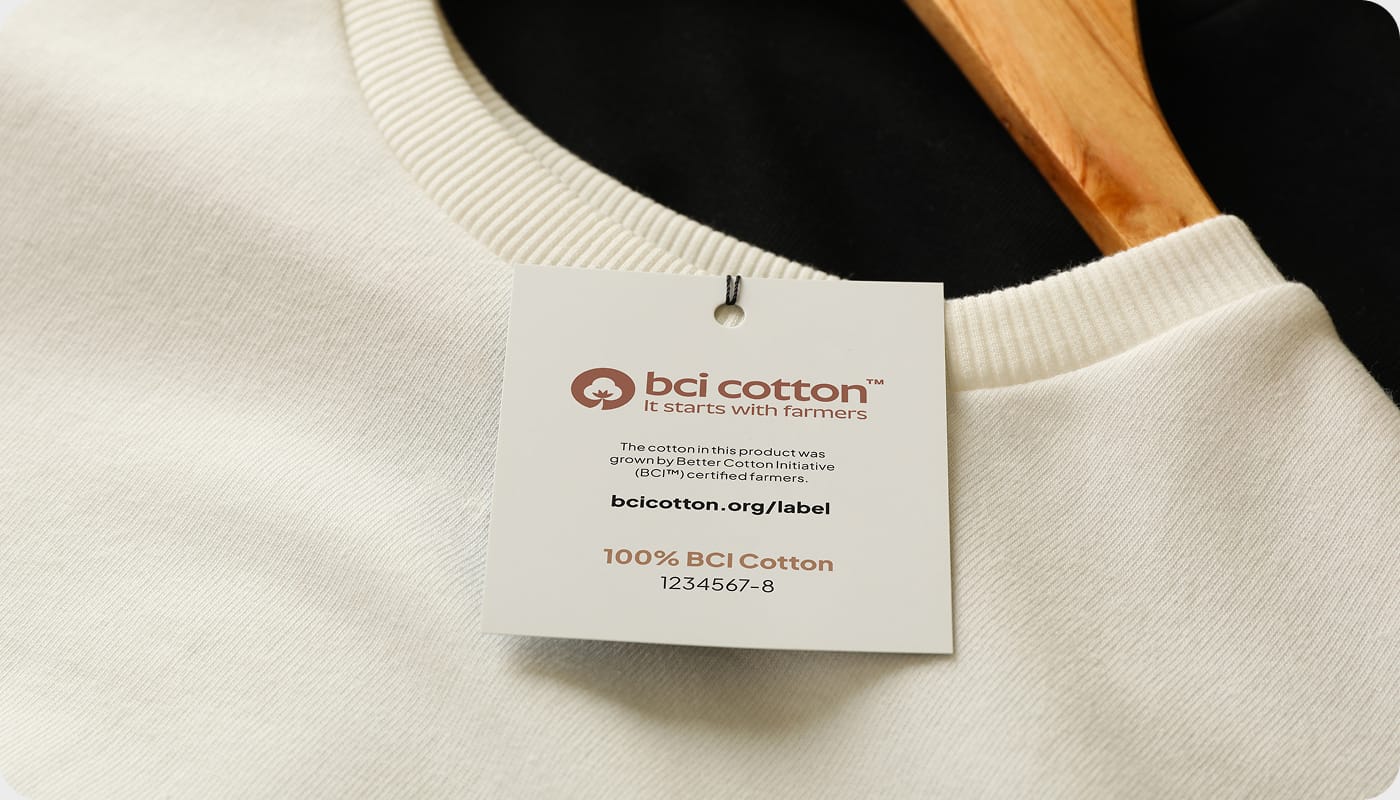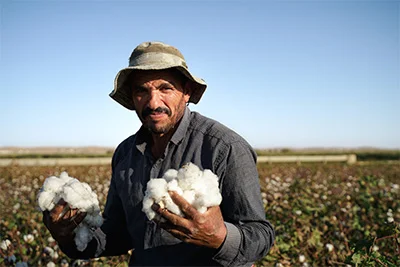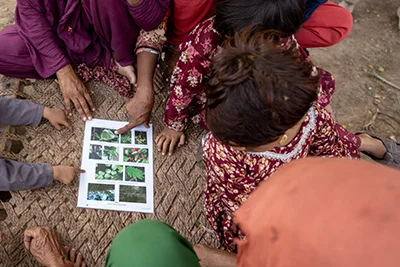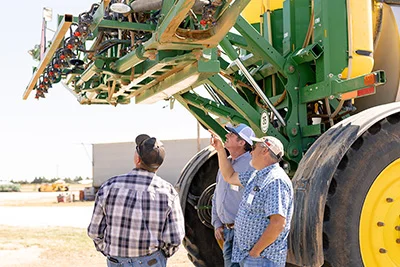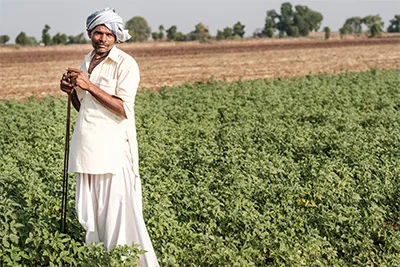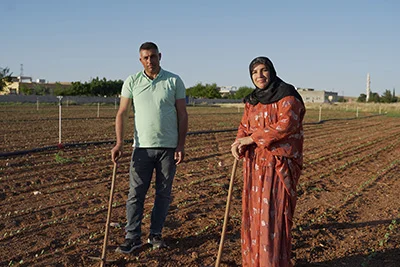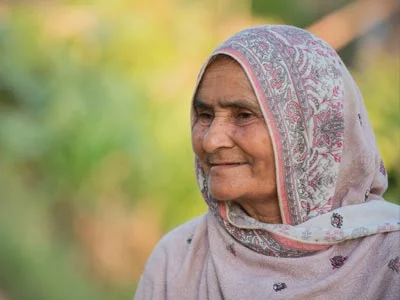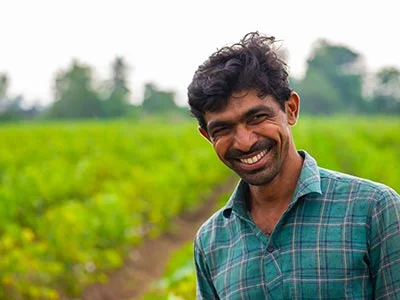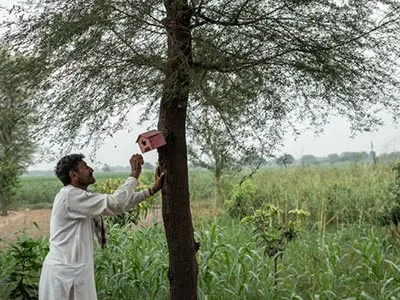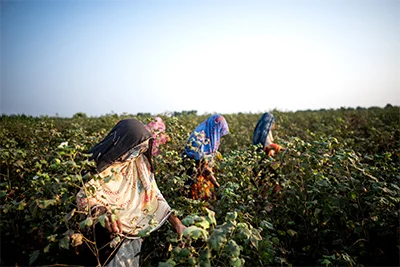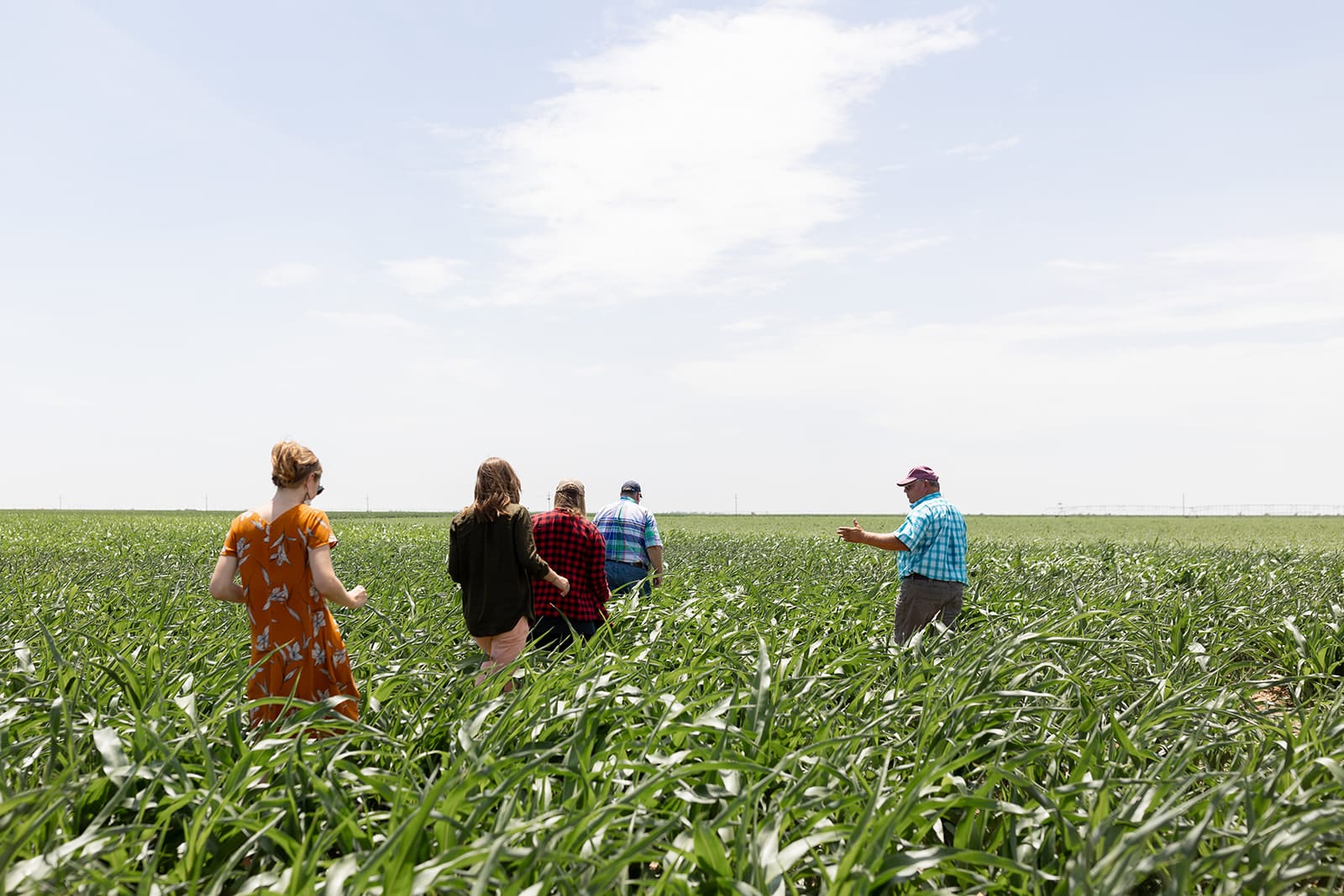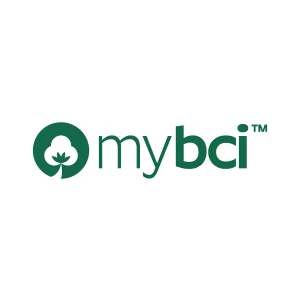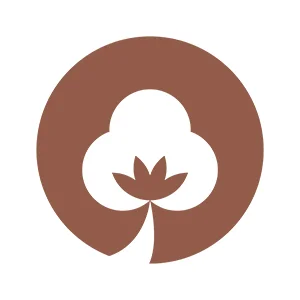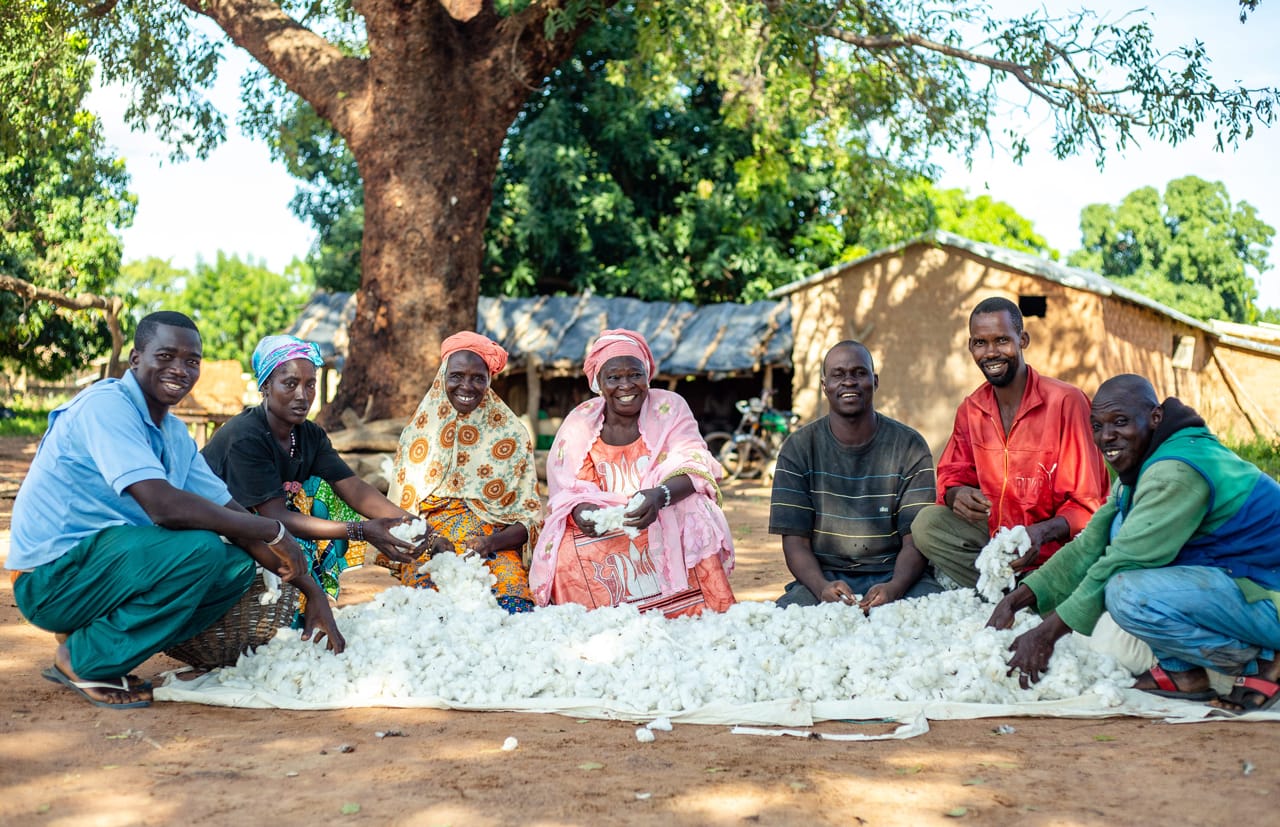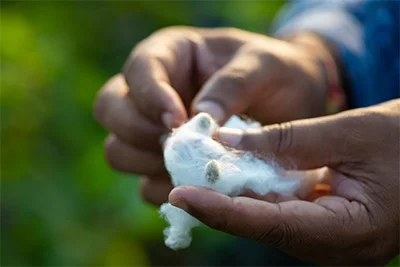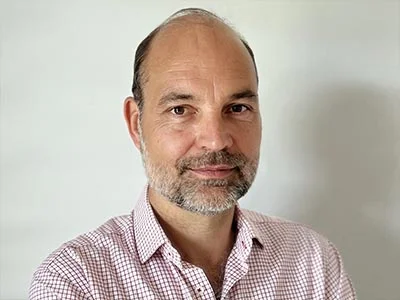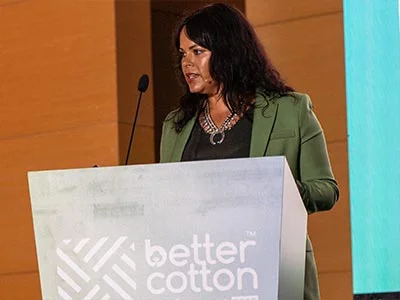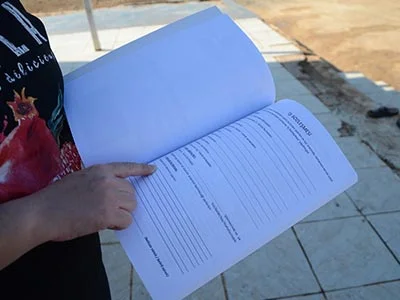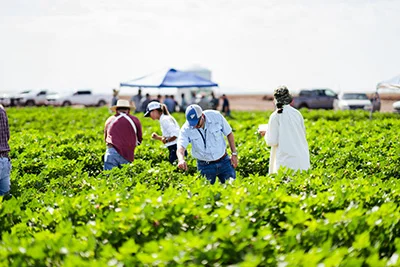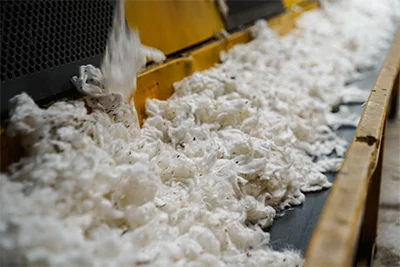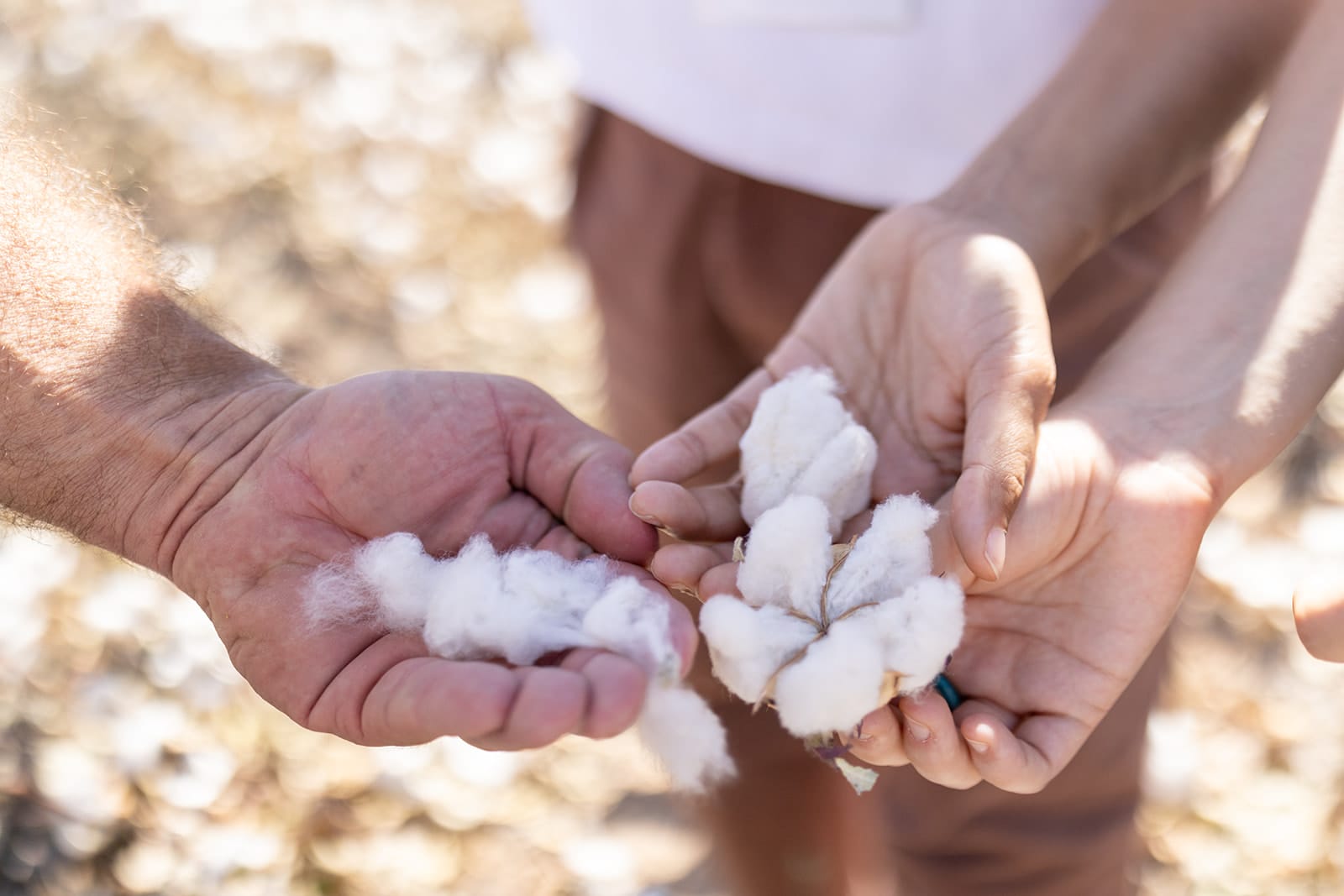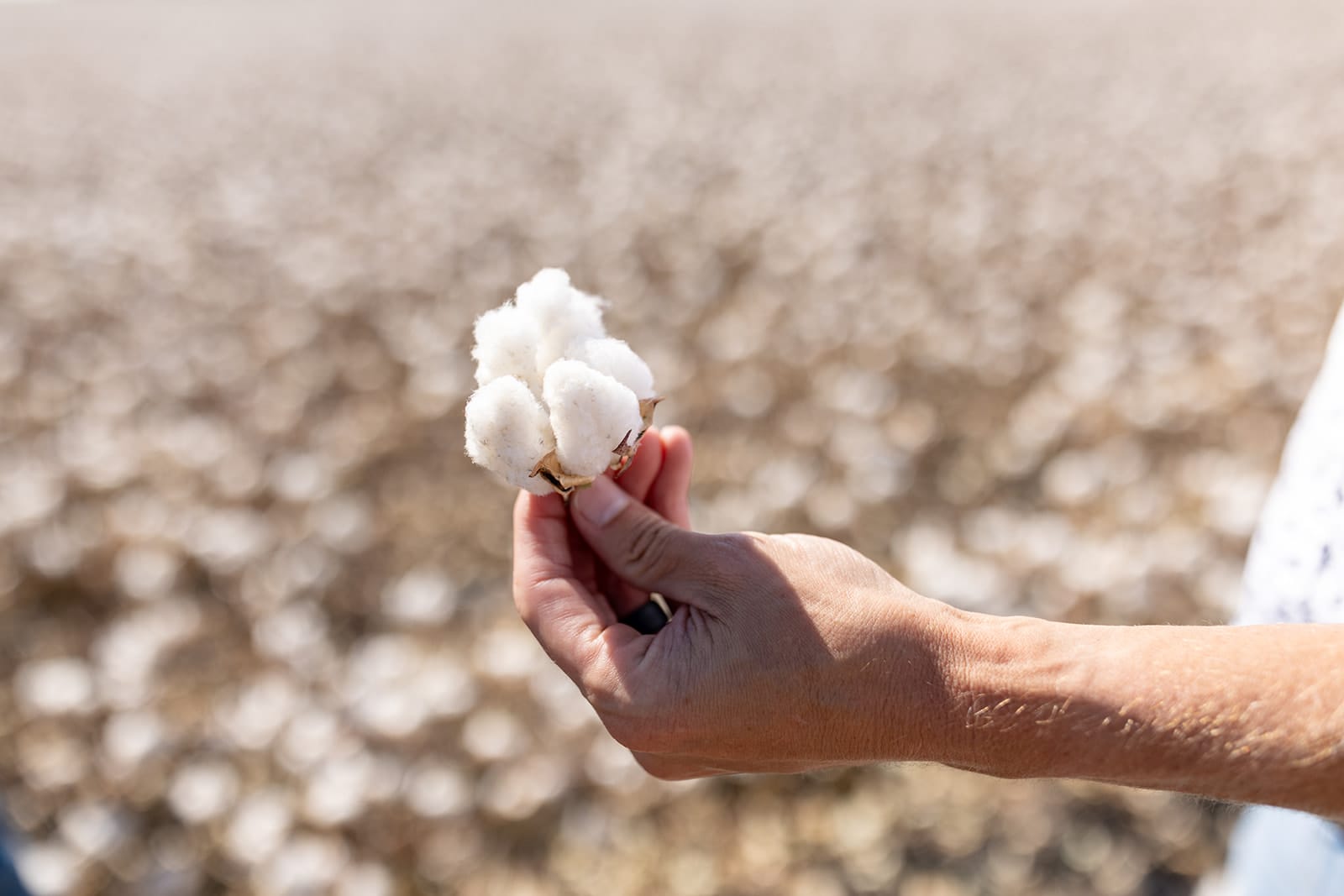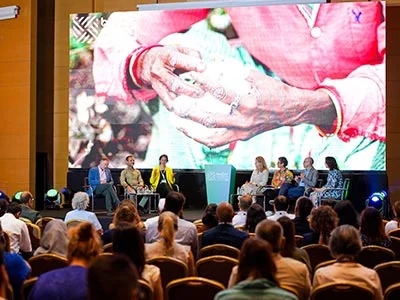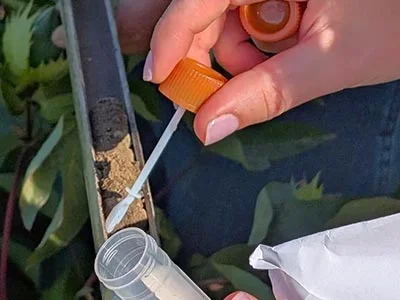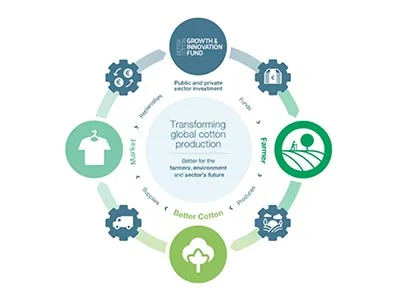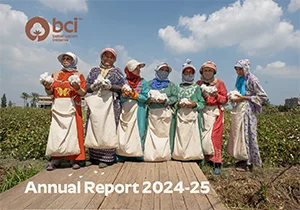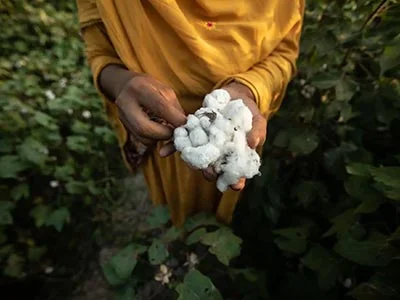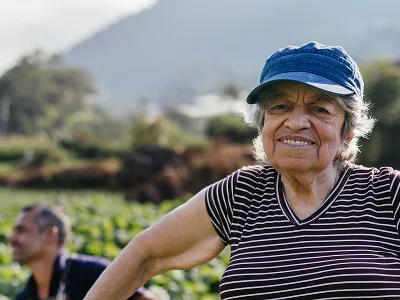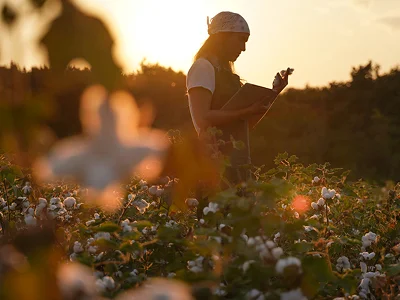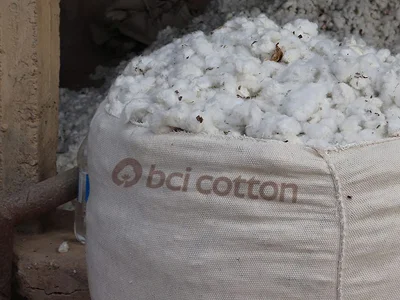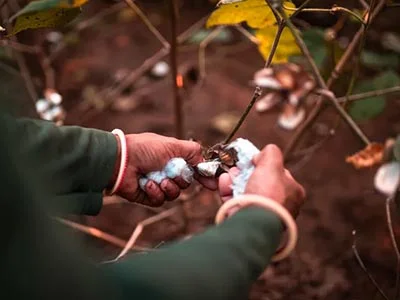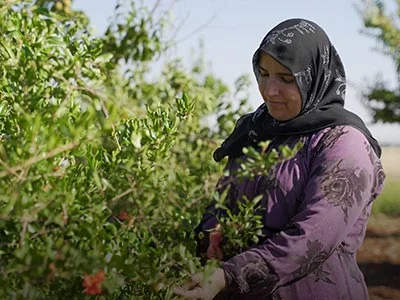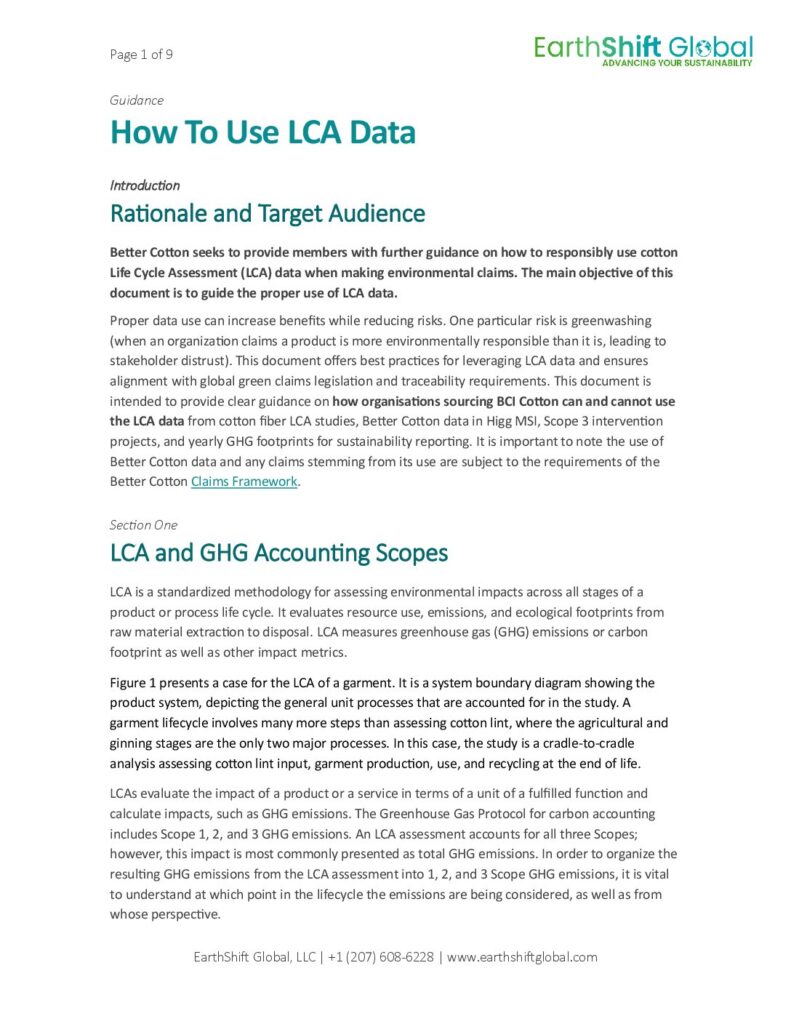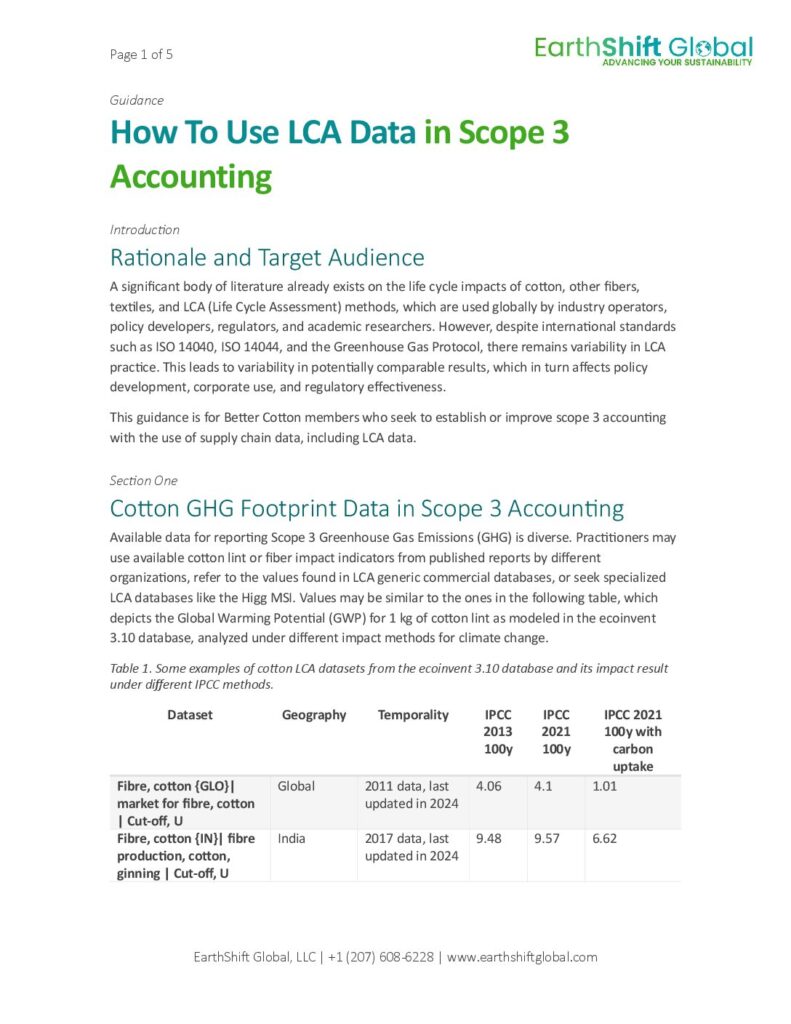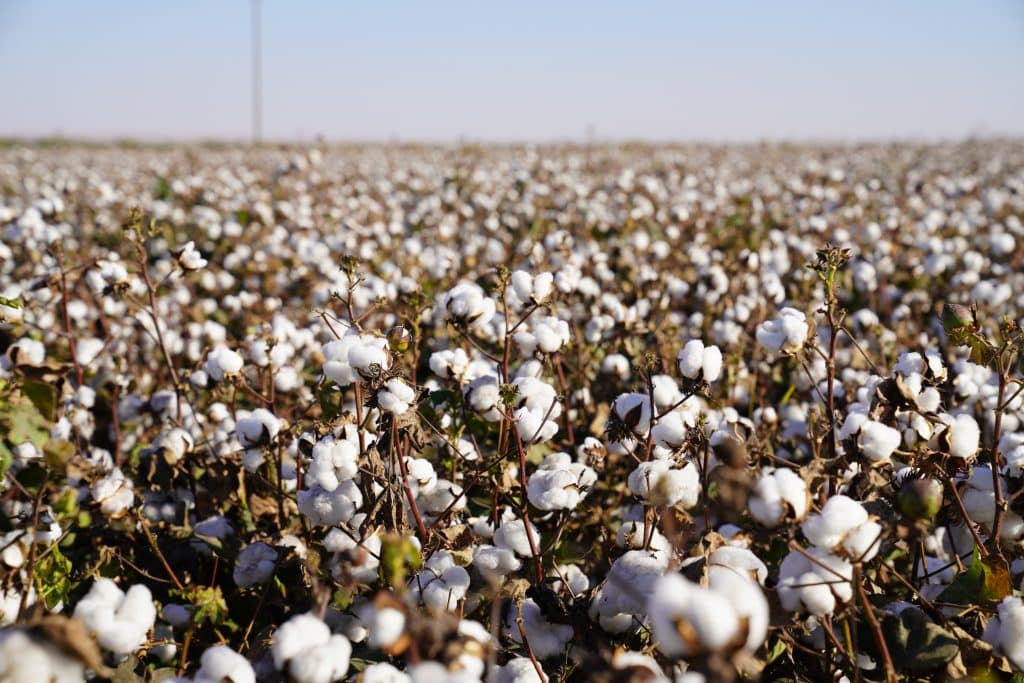
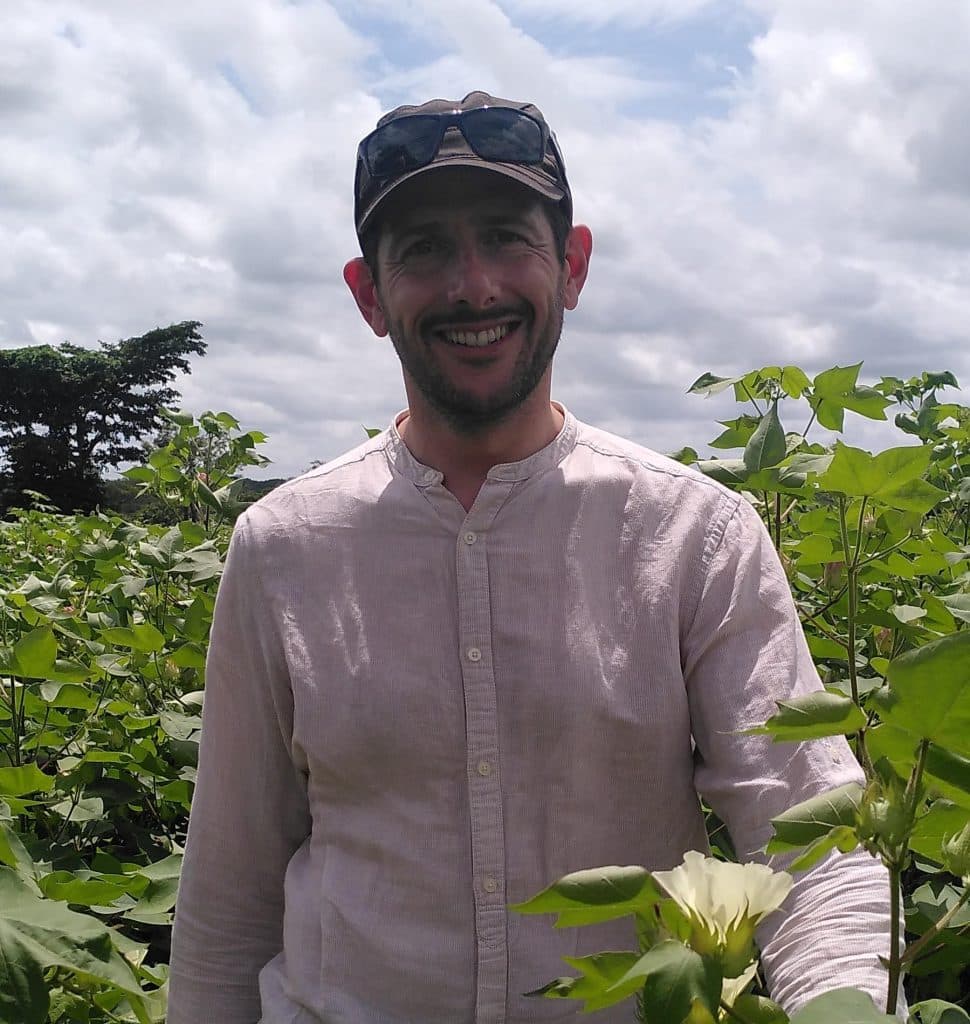

By Miguel Gomez-Escolar Viejo, Data Analysis Manager, Better Cotton
As the cotton sector evolves, businesses and consumers would like to know the environmental impact of the cotton in their clothes and textiles. It’s always been a difficult thing to measure, with a complex supply chain and a crop that grows in various regions across the globe. But the more we innovate, the more we can assess the impact of cotton.
Better Cotton Traceability, which launched in November 2023, enables our Members to trace the cotton they source back to the country where it was grown. Traceability will be a crucial tool to provide Members with increased visibility into their cotton supply chain, amid a rapidly changing legislative landscape calling for transparency around the origin of raw materials.
Against this backdrop, we are now shifting our approach to Life Cycle Assessments (LCAs), to ensure that we are in step with the sector.
What is Better Cotton’s new approach to LCAs?
We are collaborating with Cascale (formerly the Sustainable Apparel Coalition), a global, non-profit alliance of 300 stakeholders from the apparel sector, to produce country-level LCA metrics for Traceable Better Cotton lint, in line with our current capability to trace cotton to the country level.
We will use Cascale’s cotton LCA model, which is under joint development with other major sustainable cotton programmes. This model aims to ensure that various cotton programmes can use the same methodology.
Taking the lead from the Higg Materials Sustainability Index (Higg MSI), an industry-standard tool designed to provide environmental impact estimates for different materials, the model will report the following metrics:
- Global warming potential
- Nutrient pollution in water
- Water scarcity
- Fossil fuel depletion
What is a Life Cycle Assessment?
A Life Cycle Assessment (LCA) is a scientific methodology for estimating the lifetime environmental impact of a product or service. In the case of a product like a t-shirt, a set of environmental impacts are estimated from the raw material production and processing (e.g. cotton lint), through the product’s manufacture, distribution and use, to the recycling or final disposal. LCA metrics can be used to calculate a product’s footprint across many areas, including water use and Greenhouse Gas (GHG) emissions.
Estimating a product’s footprint and the associated sources of environmental impact enables the identification of hotspots, which can then be addressed. For example, when it comes to GHG, past LCA studies have consistently found emissions from cotton cultivation and ginning are primarily driven by synthetic nitrogen fertilisers and power used for irrigation.
How do we expect the LCA metrics to be used?
There is large variation in cotton production contexts and available technologies across different countries. Even data from different programmes within the same country may not be comparable. In our view, the best use of LCA metrics will be to measure progress over time for each cotton programme at the country level. With our approach to provide primary data to the Cascale Higg MSI cotton model, we can enable cost-effective, timely updates to LCA metrics, so that as a sector we can better monitor how the metrics change over time.
When paired with volumes of Traceable Better Cotton, Better Cotton-specific LCA metrics at the country level can inform our Retailer and Brand Members’ organisational footprinting and reporting against Science-Based Targets. Importantly, the metrics can help identify opportunities for investment and engagement in Better Cotton climate mitigation and other environmental projects.
How did we previously approach LCAs and why is this changing?
Globally averaged LCA metrics for a product with as varied production contexts as cotton have been increasingly seen as not credible enough to drive the sector forward toward its sustainability targets. A globally averaged LCA did not make strategic or financial sense under our Mass Balance Chain of Custody.
We believe that now is the time to engage in country-level LCAs, which match the level of Better Cotton Traceability launched in November 2023. The metrics will become more specific as traceability develops. Publishing these LCA metrics will allow us to better align with industry needs and expected legislation, and it is what is needed to work with the sector to drive positive change – like reducing GHG emissions intensity and improving water use efficiency and water quality.
LCAs are limited in the indicators they measure, and will never provide a holistic understanding of sustainability issues in cotton. Better Cotton will therefore continue to monitor and report on other key sustainability issues not covered by the LCA approach, such as soil health, biodiversity, pesticide use, women’s empowerment and sustainable livelihoods. We will also continue to conduct and participate in robust research and evaluation of varying methods to provide insights on programme quality and effectiveness.
What are the next steps?
Our aim is to introduce this new approach in the second half of 2024; the first metrics we will publish will be for India.
We also welcome the new learning from our peer organisations’ ongoing in-depth LCA efforts. By learning together, we can shine a light on persisting challenges and ensure strategic investment to make cotton production more sustainable.
Update: July 2025
We have recently commissioned guidance for our members on ‘How to use LCA Data’. This will help guide the credible and effective use of LCA data, whether for GHG accounting purposes or other environmental claims, and highlight the risks associated with its misuse. This is to accompany our LCA results published via the Higg MSI, and complements our existing LCA Methodology and Claims Guidance (available to members upon request). To find out more, check out the two documents below:

